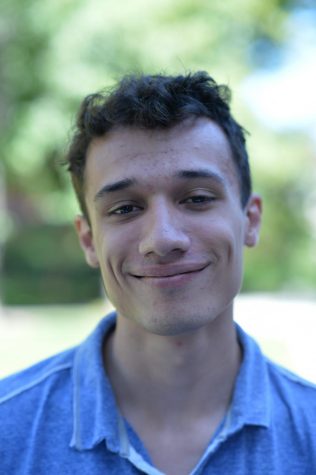Faculty establish rural opioid abuse prevention center
$1.1 million grant to prevent and handle opioid misuse
COURTESY OF JOSE M. OSARIO | CHICAGO TRIBUNE
CAHNRS assistant professor Elizabeth Weybright said there has been an increase in opioid-related deaths in the last 15 years.
November 6, 2019
A team of WSU faculty members is combating opioid abuse in rural areas with the help of a $1.1 million grant from the Mental Health Services Administration.
The money will be used to establish the Center for Rural Opioid Prevention, Treatment and Recovery. The center will not be a physical building. Instead, it refers to methods of preventing and handling opioid misuse. It was awarded to the College of Medicine and the College of Agriculture, Human, and Natural Resource Sciences.
Elizabeth Weybright, CAHNRS assistant professor and adolescent extension specialist, said the state has seen an increase in opioid-related deaths in the last 15 years and a 257 percent increase in opioid-related treatment from 2000-2015. Weybright is one of the faculty leaders working on the project.
“This is an epidemic across the country,” she said.
Michael McDonell, associate professor at the Elson S. Floyd College of Medicine and director of Behavioral Health Innovations, is also leading the project.
The goal of the non-physical center is to develop an advisory board to guide center activities and to create prevention programs that are linked to treatment and recovery resources, Weybright said. It will also conduct rural assessments in state communities.
Weybright said they hope to provide opioid use treatment assistance to at least 500 providers and citizens living in rural areas of the state within the first several years.
She said rural areas are often disproportionately impacted because residents have limited access to treatment, transportation and support.
Moscow Police Chief James Fry said the department hardly ever saw opioid use in crimes five years ago. Now, he is a member of Idaho’s Opioid and Substance Use Disorder Advisory Group and comes across it every week.
He said when doctors crack down and cut-off prescriptions, people suffering from addiction are more likely to use illegal means to get opioids.
“That addiction is strong enough to turn to heroin,” he said. “It’s severe and life-threatening.”
Weybright said her role with the center is in programs that involve the youth to participate in research and acting against opioid use and strengthening family support.
“It’s really critical we give youth the tools to identify problems we have and fight them,” Weybright said.
She said success is shown when youth are empowered to speak out and take action. She said an example of that was the way students reacted after the school shooting in Parkland, Florida.
“To prevent youth misuse of opioids, we need to understand it from their perspective,” she said.
Fry said the issue exists at any age group because it often starts with taking prescription painkillers.
“You always have to seek help from peer support and counseling,” he said. “Talk to doctors about your prescriptions.”











